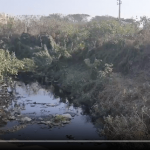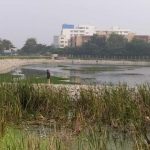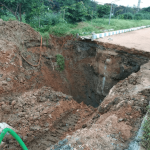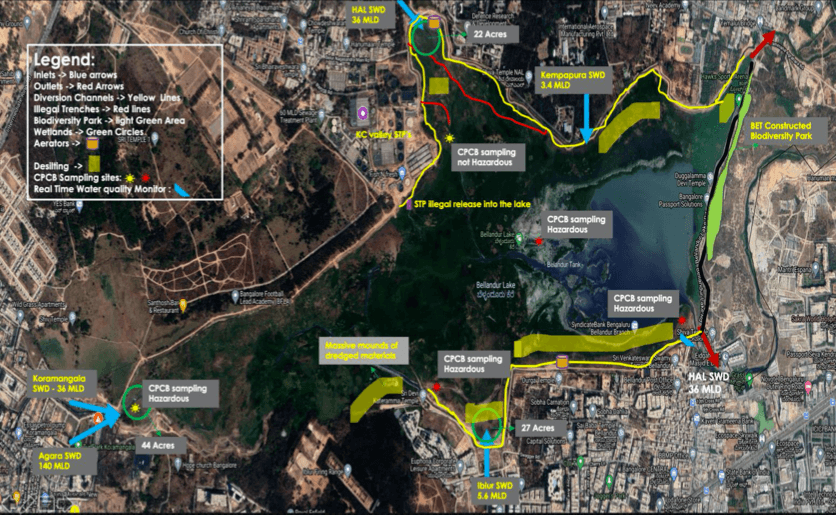
By Zahid H Javali & Aratrika Dey
The Bangalore Environment Trust (BET), a 33-year-old advisory body of enlightened citizens has petitioned the state government to work on 31 agenda points to immediately save Agara, Bellandur and Varthur lakes from extinction. They have stressed the need for adequate budgeting towards time-bound maintenance of the Bellandur-Varthur catchment area by enacting a lake-specific policy. Besides, the most precious treated wastewater is being used for irrigation in Kolar when it should be used to recharge the depleting groundwater in the city. “For judicious use of treated wastewater, a solid action plan for utilisation of treated wastewater is necessary,” reads the report. The authors, Dr AN Yellappa Reddy, Nirmala Gowda and Dr Nidhi Paliwal, ask the government to stop focussing on beautification and start taking measures to restore the lakes and prevent pollution. This, they say, can happen only through thorough investigation, research, and constant vigilance. They want the government and the elected representatives to show the right ‘intent’. “The government is this recalcitrant child that judiciary and civil societies have to deal with today,” the authors contend. “With this uncooperative attitude, comes evading courts with inaccurate facts and escaping public scrutiny with opaque operations.”
BET’s report has blamed the epic negligence and lack of foresight by the Bruhat Bengaluru Mahanagara Palike (BBMP) and the BWSSB for the prevailing mess in the city. The Karnataka State Pollution Control Board (KSPCB) is chided for remaining a mute spectator to industrial pollutants entering the lake bodies. The one-time rejuvenation of the lakes by Bangalore Development Authority (BDA) is dubbed unscientific, wasteful, and impractical. Instead of desilting the lake, the drains leading to the water bodies would be a better alternative, according to the authors. Calling the current restoration work as “ad-hoc, illogical and not supported by well-documented data and scientific facts”, the 57-page document not only outlines the many problems affecting Bellandur and Varthur lakes, but also suggests ways to overcome them. The two major issues that take precedence are the silt and water. The petition dated November 7, 2020 has also been given to the BBMP, BDA, BWSSB, KSPCB, Urban Development Department (UDD), and the monitoring committee of the 10-year-old National Green Tribunal (NGT), a court that deals with issues related to the environment.
Toxic lake-bed
A large amount of the city’s sewage is discharged into the catchment area of both Bellandur and Varthur lakes. Amongst that, you have toxic industrial effluents and solid waste, municipal solid waste, construction, pharmaceutical, plastic waste, and raw sewage. Bellandur lake is one of the downstream lakes within a chain of lakes and happens to be the largest in the city where pollution steadily pools into it from the upstream lakes. The result of this is a lake-bed full of toxic substances and heavy metal content.
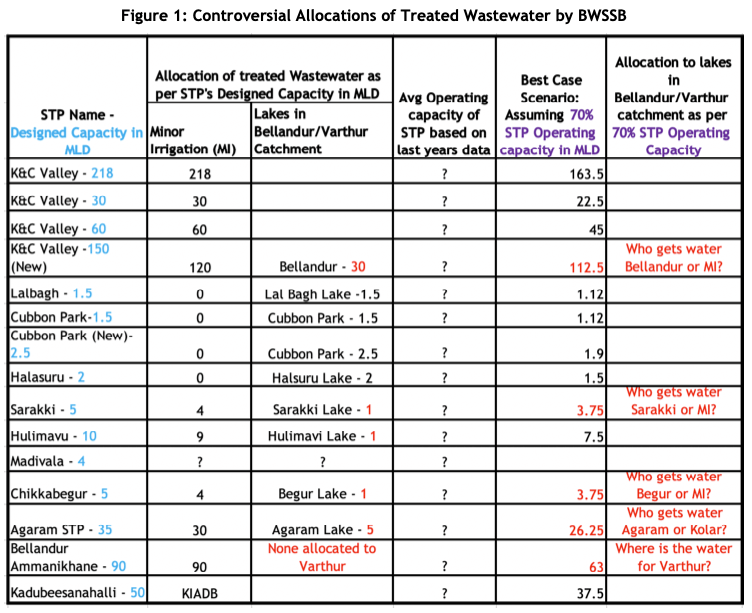
Hazardous silt accumulation
According to previous reports submitted by the pollution control board, the silt that has been deposited on the lake-bed is hazardous in nature, with high heavy metal content. “They are not equipped to handle the silt, nor have they equipped the people handling the silt,” Dr. Paliwal told Residents Watch. “It is hazardous, not only to the people living around Bellandur lake but also to the laborers handling the silt.” Upon constant exposure to heavy metals, the residents and workers are at risk.
No proper desilting
The workers lack the proper scientific equipment required to ensure proper desilting of the lake bed. According to the authorities, the accumulated silt is 3.3M tonnes when “there is much more silt than that”, according to Dr. Paliwal. Desilting is done to prevent putrefaction – the new water which is allowed into the lake after desilting should be healthy enough to maintain its ecological balance. The BDA plans to desilt the lake partially, taking out 1.6 per-cent of the total amount present. “If the silt is not removed completely, then the whole exercise goes to waste,” says Dr Paliwal.


No designated landfills or dump yards have been assigned for the desilting process. The removed silt is being taken and dumped into mounds at different points on the lake-bed itself. The presence of industrial effluents, chemical waste, and heavy metals, has led to severe fires in the middle of Bellandur lake. This fire aids in the burning of chemical substances, which settle on the surface of the water still present in the lake and then again settle on the lake-bed as sediments – which is hazardous in both ways.
Sewage treatment is a must
Much sewage water flows in from the raja kaluve (major stormwater drain). Conversations with the BWSSB, BBMP, and KSPCB has brought to light that there is no realistic measure of the amount of water being dumped into the lakes. “How many industries are discharging untreated effluents, how much water is being treated in the sewage treatment plants?” Dr. Yellarappa Reddy informed Residents Watch. “They are either always trying to evade answers, or give some irrelevant answer. That is not going to help the lakes or Bengalureans.” There is neither any realistic data showing the operating capabilities of the sewage treatment plants, nor anything regarding the amount or quality of the ‘treated’ wastewater. “The problems need to be treated at their source.”
Bangalore is no stranger to power-cuts. However, these power-cuts only serve to cause more harm to the lakes. “If there is a shortage of electricity, sewage water goes untreated. It takes some time to treat that water, or it is simply let into the lake,” says Dr. Reddy, even though the National Green Tribunal has recommended a complete restriction of untreated sewage water into the lakes. “Instead of sewage treatment plants (STPs) hidden in the corners of the city, there should be decentralized STPs,” says civic activist Muralidhar Rao. “Every community should have one of their own. Only then should the excess water be let into the stormwater drains.”
Poor water allocation for Bellandur-Varthur
According to the NGT, the full water level of the lakes has to be maintained. At times like this, treated wastewater is quite vital. However, there seems to be poor to no allocation of treated water for the lakes, especially Bellandur and Varthur. “In the submissions to the NGT, the way they (authorities) have shown themselves is completely fraud, says Dr. Paliwal. “The treated water is not allocated to the city’s lakes as the entire amount is being sent to Kolar.” Ninety per-cent of the treated water from the STPs around the city are leaving Bangalore. Bellandur lake in itself has been allotted only 30 MLD (megalitres per-day), Varthur gets none, while approximately 428 MLD is being sent to Kolar. A question arises, if most of the water is being sent away for minor irrigation, what is going to happen to the lakes in the city? What about the depleting groundwater issue?
Is the K-100 project going to help?
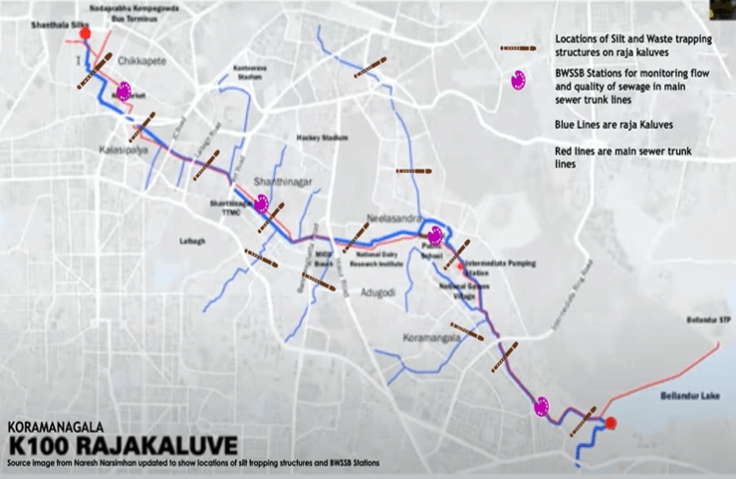
The BBMP has a project called K-100 that is underway where the accumulated rainwater from the Koramangala valley is re-directed to Bellandur lake. They plan to build alternate pipe-lines parallel to the existing ones to fight off the excess water. “The lake has to survive first,” says Dr. Reddy. However, there is no mention of treating the water before it is let into the lake. Then what happens to water management?
No plan of action
“You have to pinpoint and prepare a map of the area,” suggests Dr. Reddy. “Identify the interconnected lakes, the kind of sewage flowing in those lakes and wetlands.” However, the blueprints for the plan of the lake are missing. “We have attended government meetings, written notices, and detailed topics that have to be discussed with the concerned departments,” says Dr. Reddy. Similarly, other departments and bodies have been notified of the immediate problems at hand. Several efforts were made by BET and environmental activists too. But the authorities lack the determination to take any initiative. Besides, the officials who are said to be working together for the rejuvenation project are working in silos. Therefore, plans made by one, are clashing with the other, and jeopardizing the entire plan.
From what is being promised and expected, on-ground actions are far different. According to Dr. Paliwal, “There is a need to pause and do a course correction of the current rejuvenation plan of Bellandur where the immediate attention of NGT is required.”
The 31 agenda points for the government
- Prepare treated waste water utilization plan for Bellandur/Varthur catchment, with a very clear policy decision to use the treated wastewater to maintain the lakes of Bengaluru up to its full water level.
- BWSSB must bring this STP to NGT’s attention. Root cause analysis of the defunct state of Madivala STP and action plan along with timelines to make it operational must be submitted to NGT.
- Weekly, Min, Max and Avg operating capacities, must be calculated for each of the STP. The same must be used for compliance monitoring and to formulate treated wastewater utilization plans. This must be put on a website for public consumption.
- Flow levels of the raja kaluves, sewer lines and sewage transportation losses are important metrics that bring transparency and accountability, on the management of sewer networks. These metrics must be generated and used by the monitoring committee to monitor for compliance. This must be put on the website.
- A time series, treated sewage quality data – Avg, Min, Max for each parameter is needed to check for compliance.
- BWSSB must ensure accuracy of online real time monitoring data. They should put online the data with regards to fecal coliform as and when tested.
- Action plan to address power outage issues must be formulated. BWSSB must pay damages for each of these discharges on polluter pays principle as directed by Hon’ble NGT.
- Feasibility studies of the remediations must first be conducted. KSPCB/CPCB/LDA must formulate guidelines for design and maintenance of these interventions. Monitoring committee must get orders from NGT.
- KSPCB/CPCB/ must assess the state of BWSSB’s labs for compliance to the standards under EPA act, identify the gaps and suggest measures to close the gap. Monitoring committee must get orders from NGT to such effect.
- Appropriate silt and waste trapping structures at regular distances, with daily removal and disposal of solid waste must be immediately done in accordance with law .
- Exact area (in terms of sq feet) and locations of buffer zones, available for bio-diversity park plantation must be immediately determined and plantation must start. The locations must be spatially mapped.
- Baseline data (extent and location) on encrochments of raja kaluves in the Bellandur and Varthur lake catchment must be established by the Revenue Department. Progress made by BBMP in terms of encroachment removal must be monitored monthly against that baseline data to show compliance to NGT orders.
- BBMP/BDA must provide a full time gardener and make necessary arrangements for successful maintenance of this bio-diversity park. The monitoring committee must take cognizance of this citizen effort and instruct the government departments accordingly.
- The muck on the lake bed that is being dredged right now is hazardous. No more debates. The ultimate fate of it must be immediately worked out, considering the Right to Life and most importantly, the orders of O.A 804/2017.
- KSPCB must furnish a report on the state of illegal industries in Bellandur/Varthur catchment. This report must include the pollution load assessment of these industries and the speedy action that is taken to prevent pollution.
- The monitoring committee must get an order from the tribunal for conducting a quarterly drive to identify and immediately shut down illegal industries. A separate cell within KSPCB is needed for this. A government order has to be passed to that effect.
- KSPCB and monitoring committee must look into the compliance with respect to automobile service stations, dhobi ghats and household garment-dyeing units.
- Monthly compliance reports of the STP’s , ETP’s and CETP’s in Bellandur/Varthur Catchments must be furnished by KSPCB, especially important is the 99 industries that are significant from a water pollution point of view. Important parameter to assess compliance status is the date of enforcement inspection. These specifics are important to determine the state of pollution in the catchment
- Catchment-wise macro picture with regards to ETPs, CETPs, STPs, MSW facilities, Legacy waste sites must be prepared by KSPCB/CPCB to understand the gaps so necessary interventions can be made for pollution prevention
- KSPCB must release an analysis report of the real time lake monitoring data before, during and after lockdown.
- Investigation must be conducted to find the sources of discharges and hold the polluters responsible under polluter pays principle.
- KSPCB must formulate a robust water quality monitoring program as ordered by NGT, following the CPCB guidelines that includes the drain wastewater quality, drain sediments, drain flow, lake plankton analysis, micro-pollutants assessment etc.
- The website is a major tool for transparency and accountability. It must be updated to keep the citizens informed and to allow them to actively participate.
- MC must get a clear order from NGT for the removal of diversion channels once the necessary work is done. All the documents pertaining to diversion channel works must be put on the website as ordered by NGT.
- A well designed cumulative Detailed Project Report for the remaining works, in compliance with existing laws and scientific standards, must be done. This DPR must undergo a public consultation phase before final approval. In the case of NGT O.A. 804/2017 (39), Bellandur lake is categorized as a probable contaminated site, for which a Detailed Plan for desilting will be needed as per the guidelines established by CPCB.
- The cost of creating a 1000-liter water holding capacity is Rs 452. Is this cost justified? The MC must conduct cost-benefit analysis to ensure that the plan is sound and cost justified.
- As Bellandur lake is designated as probable contaminated site, desilting works will have to be done as per the guidelines established in the case of NGT O.A. 804/2017
- Constitute Lake Committee and identify Lake Warden/Chief Lake Warden as per Hon’ble high Court in the case of WP 817/2008. The Lake Committee must develop and approve Bellandur Lake specific maintenance plan with necessary resources including funds. The same for Agara lake and Varthur lake.
- Document such occurrences and bring it to the attention of Hon’ble NGT. Hold a technical enquiry and take corrective actions to prevent such occurrences. Hold the officers responsible, accountable.
- Record and Inspect fire incidences. Investigate why the solid waste from the lake bed was not cleared as per NGT directions and hold the officers responsible. Identify – via physical and drone survey – and remove deposits of solid waste on the lake bed.
- Conduct research studies to understand the extent and magnitude of DIOXINS and FURANS contamination. Strengthen KSPCB’s lab and establish a program for regular monitoring of DIOXINS in air, water, sediments and vegetation. Setup air quality monitoring station in the vicinity of the lake at an appropriate downwind location as identified by air quality experts. Strengthen KSPCB’s lab and establish a program for regular monitoring of Methane gas.
All pics & graphs: BET report


